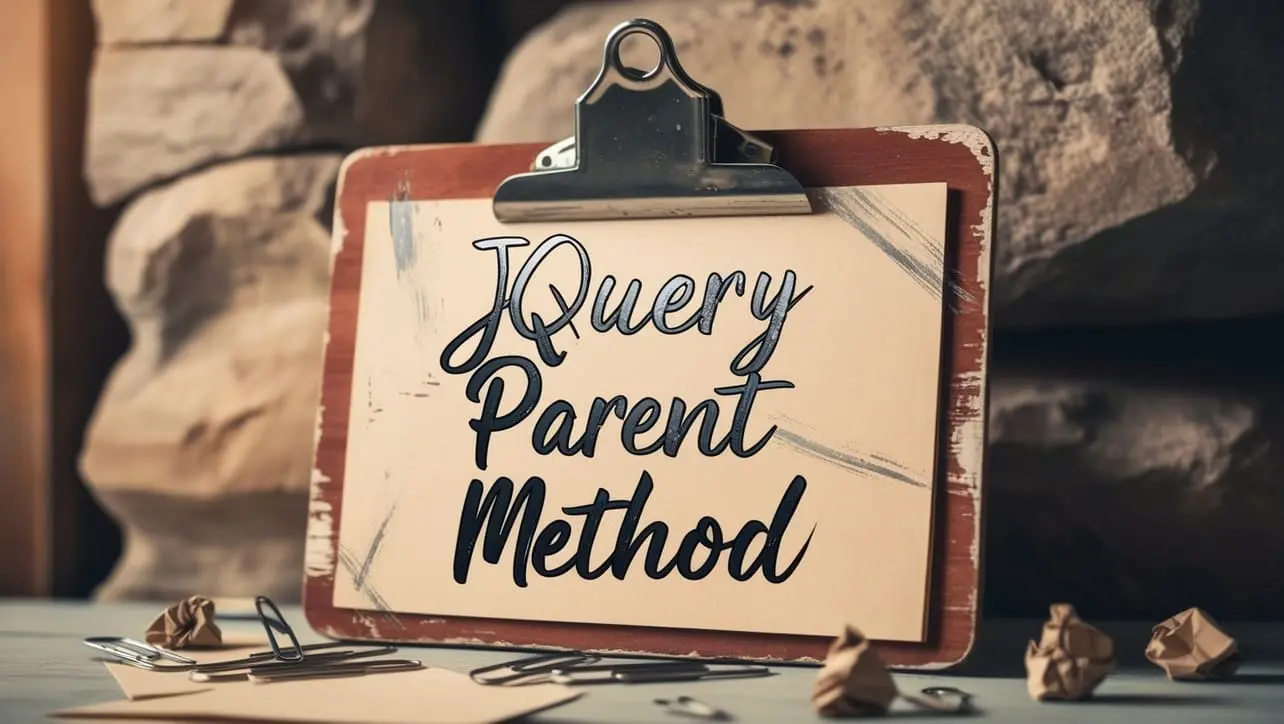
jQuery Topics
- jQuery Introduction
- jQuery Callbacks
- jQuery deferred
- jQuery selectors
- jQuery Ajax Events
- jQuery Ajax Methods
- jQuery Keyboard Events
- jQuery Keyboard Methods
- jQuery Form Events
- jQuery Form Methods
- jQuery Mouse Events
- jQuery Mouse Methods
- jQuery Event Properties
- jQuery Event Methods
- jQuery HTML
- jQuery CSS
- jQuery Fading
- jQuery Traversing
- jQuery Utilities
- jQuery Properties
jQuery .parent() Method

Photo Credit to CodeToFun
🙋 Introduction
In jQuery, DOM traversal is made easy with methods like .parent(), which allows you to navigate up the DOM tree from a selected element. Understanding how to use .parent() effectively can streamline your code and make DOM manipulation more intuitive.
In this guide, we'll explore the jQuery .parent() method, its syntax, and provide examples to illustrate its usage.
🧠 Understanding .parent() Method
The .parent() method in jQuery is used to traverse up the DOM tree from the selected element and select its parent element. This method is particularly useful when you need to access or manipulate the parent of a given element.
💡 Syntax
The syntax for the .parent() method is straightforward:
$(selector).parent()📝 Example
Accessing the Parent Element:
Suppose you have a nested structure of HTML elements, and you want to select the parent <div> of a specific <p> element. You can achieve this using the
.parent()method as follows:index.htmlCopied<div class="parent"> <p>This is a paragraph.</p> </div>example.jsCopied$("p").parent().css("border", "2px solid red");This will apply a red border to the parent <div> of the <p> element.
Manipulating Parent Elements:
You can also manipulate parent elements using
.parent(). For example, let's add a class to the parent <div> of an <input> element when it is clicked:index.htmlCopied<div> <input type="text"> </div>example.jsCopied$("input").click(function() { $(this).parent().addClass("highlight"); });This will add a class named highlight to the parent <div> when the <input> element is clicked.
Chaining with .parent():
The
.parent()method can be chained with other jQuery methods to perform complex DOM manipulations. For instance, let's select the parent <div> of a <span> element and then find all its children <p> elements:index.htmlCopied<div> <span>This is a span.</span> <p>Paragraph 1</p> <p>Paragraph 2</p> </div>example.jsCopied$("span").parent().find("p").css("color", "blue");This will change the text color of all <p> elements inside the parent <div> of the <span> to blue.
Traversing Multiple Levels Up:
You can specify how many levels to traverse up the DOM tree by passing a selector to the
.parent()method. For example, to select the grandparent element:example.jsCopied$("p").parent("div").parent().css("background-color", "yellow");This will change the background color of the grandparent <div> element of the <p> element to yellow.
🎉 Conclusion
The jQuery .parent() method provides a simple and effective way to navigate up the DOM tree and access parent elements. Whether you need to select, manipulate, or traverse multiple levels up, this method offers flexibility and efficiency in DOM manipulation.
By mastering its usage, you can enhance the interactivity and functionality of your web applications.
👨💻 Join our Community:
Author

For over eight years, I worked as a full-stack web developer. Now, I have chosen my profession as a full-time blogger at codetofun.com.
Buy me a coffee to make codetofun.com free for everyone.
Buy me a Coffee












If you have any doubts regarding this article (jQuery .parent() Method), please comment here. I will help you immediately.